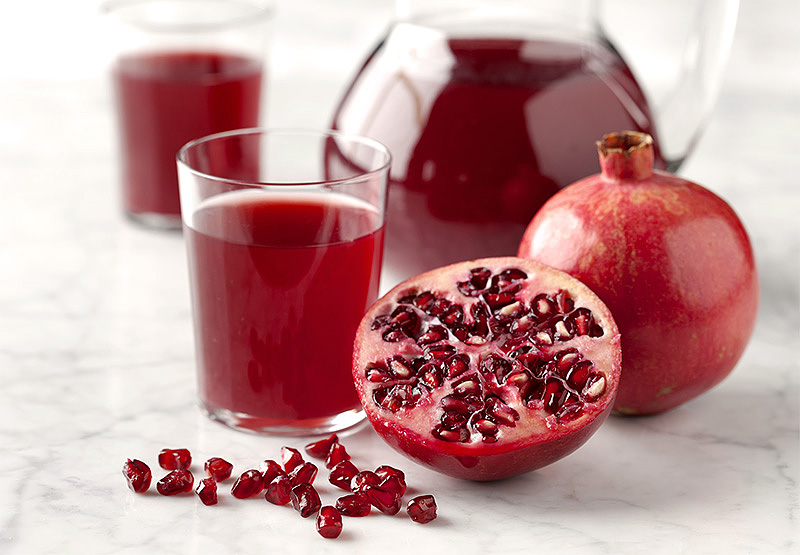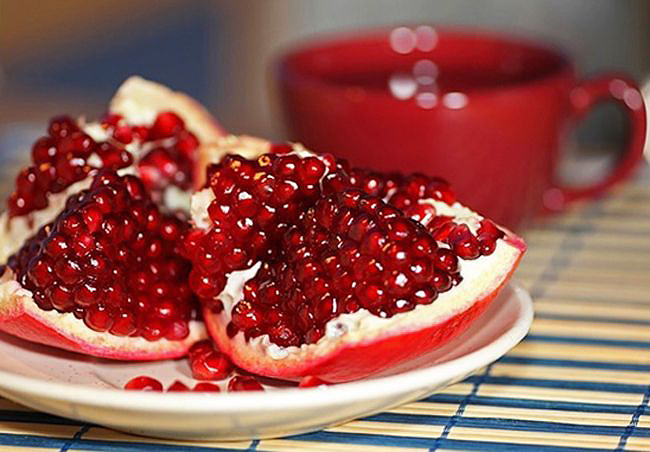A new study published in the journal Atherosclerosis confirms that pomegranate extract may prevent and/or reverse the primary pathology associated with cardiac mortality: the progressive thickening of the coronary arteries caused by the accumulation of fatty materials known as atherosclerosis.
Mice with a genetic susceptibility towards spontaneous coronary artery blockages were given pomegranate extract via their drinking water for two weeks, beginning at three weeks of age. Despite the fact that pomegranate treatment actually increased cholesterol levels associated with very low density lipoprotein-sized particles, the treatment both reduced the size of the atherosclerotic plaques in the aortic sinus (the dilated opening above the aortic valve) and reduced the proportion of coronary arteries with occlusive atherosclerotic plaques.
Pomegranate Juice Soothes Stressed Arteries
In the study, researchers tested the effects of pomegranate juice on samples of human cells that line blood vessels. The cells were exposed to excessive physical stress, such as might occur with high blood pressure.
Cells that were treated with pomegranate juice had less evidence of damage from the stress.
In addition, tests on mice showed that pomegranate juice significantly slowed hardening of the arteries that developed from high cholesterol.
If further studies show those results in humans, researchers say pomegranate juice may be useful in both prevention and treatment of heart disease.
Anyone who drinks pomegranate juice, or is lucky enough to eat one fresh, can understand why it is so effective at cleansing the circulatory system. Nature certainly planted enough poetic visual clues there for us: its juice looks like blood, and it does resemble a multi-chambered heart, at least when you consider its appearance in comparison to most other fruits.
If you choose to drink pomegranate juice, check the label to be sure that you’re drinking pure pomegranate juice, and not a mixture of juices that contains added sugar. The sugar adds more calories to the juice, which reduces its heart-health benefits.
How to Juice Pomegranate
With all these health benefits, it’s time to get over our fear of this wonderful fruit. Juicing is an easy way to use pomegranates. The first step involves cutting off the crown of the pomegranate. This is the part with the stem at the top. Once the crown is removed, cut the pomegranate into four sections. Place the sections into a bowl of water and, using your fingers, gently roll the pips out from the membrane. Once the seed pips have been separated, drain out the water and you are ready to place them in the juice extractor.
Here are three recipes that use pomegranate. Once you get comfortable using pomegranate, you can make up your own juice recipes.
Berry Happy
This juice is super healthy because it combines flavonoid-rich berries with pomegranate.
1 cup mixed berries (such as blueberries, raspberries, strawberries, blackberries)
1/4 cup pomegranate pips
1 apple or ripe pear, cut into wedges
Juice the berries, then the pomegranate pips. Flush through with the apple.
Red and Fruity
This juice is great for finicky kids, and takes advantage of the red pigments in berries, cherries, and pomegranate to cover up the beet taste.
1/2 cup strawberries
1/2 cup pitted cherries
1 beet
1/4 cup pomegranate pips
1 apple, cut into wedges
Juice the strawberries and cherries, followed by the beet, pomegranate, and apple.
Pommy Blue Juice
This refreshing purple juice is as beautiful as it is healthy.
1 cup pomegranate pips
2 cups blueberries
Juice the fruits all at once and enjoy.

